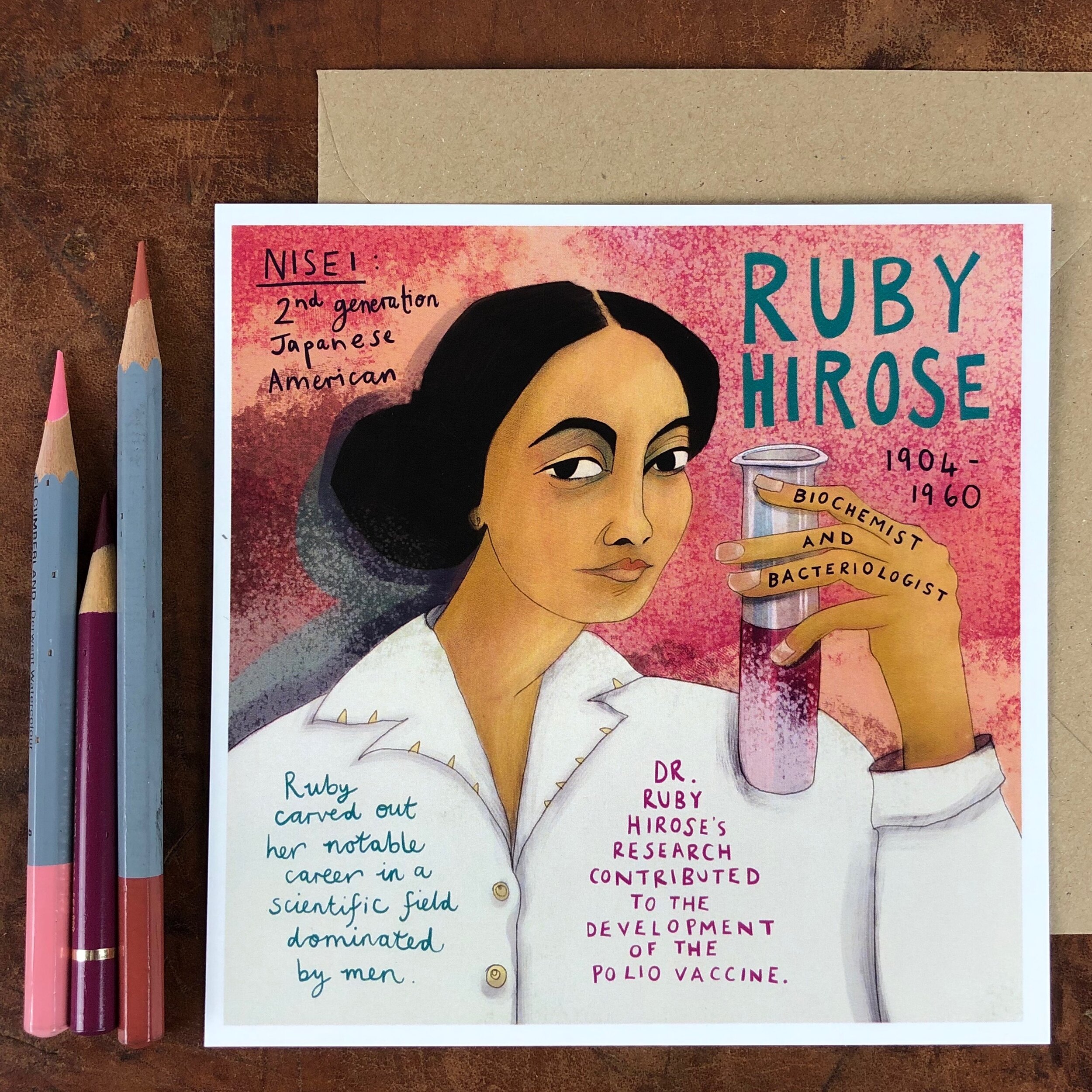Have You Heard Of... Ruby Hirose?
Ruby Hirose was a biochemist and bacteriologist.
Ruby Hirose was born in Washington State, USA, in 1904. Her parents, coming from Japan to start a new life in America, were working to establish a sustainable income as farmers. It was a precarious life – along with the struggles of an immigrant, Ruby’s father worried about money for his children’s education.
Ruby and her siblings were among the first of the Nisei generation – second generation Japanese American – at their predominantly White school. Ruby went on to study at the University of Washington, gaining a bachelor’s degree in 1926 in pharmacy, and a Master’s degree in pharmacology in 1928. After moving to Cincinnati, Ohio, Ruby earned her Ph.D, and started work at the University as a researcher.
In 1938, Ruby took a job at the William S. Merrell Chemical Company, where she researched serums and antitoxins, and worked on the development and advancement of vaccines. In a male dominated scientific landscape, Ruby’s research greatly contributed to the development of the polio vaccine, a chemical advance that has helped millions of people worldwide.
However, it is through a mere quirk of geography alone that Ruby was able to carry on with her vital research. Having moved to Ohio, away from Washington, Ruby Hirose escaped the wartime fate of her Japanese American community living on the West Coast. Forced to leave their homes and livelihoods simply because they were of Japanese ancestry, the Japanese American community, many of whom were American citizens, were rehomed in remote internment camps inland, in 1942, Ruby’s family among them. The camps were basic, at best. Penal might be a more fitting word. Fear had created government suspicion that the communities posed a threat to national wartime security. There was no official charge to support this, nor did those relocated have any recourse to appeal the loss of their freedoms and property.
Towards the end of the war, as the tide turned in the favour of the Allies, the internment camps were disbanded and the Japanese American communities returned. The Army had already begun to recruit the Nisei – they were fighting for the country they were born in. On their release from the camps, many Japanese Americans had lost everything they once knew, or possessed. Years later, in the 1980s, this internment was recognised as gravely unjust, and President Reagan made an official apology. A payment of $20,000 was provided to each person who had been relocated.
Dr. Ruby Hirose’s work in science was highly respected. It is sobering to think how near she came to not having been able to fully complete her career at all.
Ruby died in 1960.
Want to read more?
From the cemetery where Ruby is buried
On the Japanese American relocation and also here
A great, informative post on Ruby
Sources:
https://siarchives.si.edu/collections/siris_arc_297429
http://auburnpioneercemetery.net/blog/2013/08/an-american-born-japanese-girl-scientist/
https://heychemistry.com/2017/03/13/profile-ruby-s-hirose/
https://en.wikipedia.org/wiki/Ruby_Hirose
https://guides.library.duq.edu/c.php?g=972534&p=7029811
https://www.archives.gov/education/lessons/japanese-relocation
https://www.cdc.gov/globalhealth/immunization/infographic/eradicate_polio.htm

